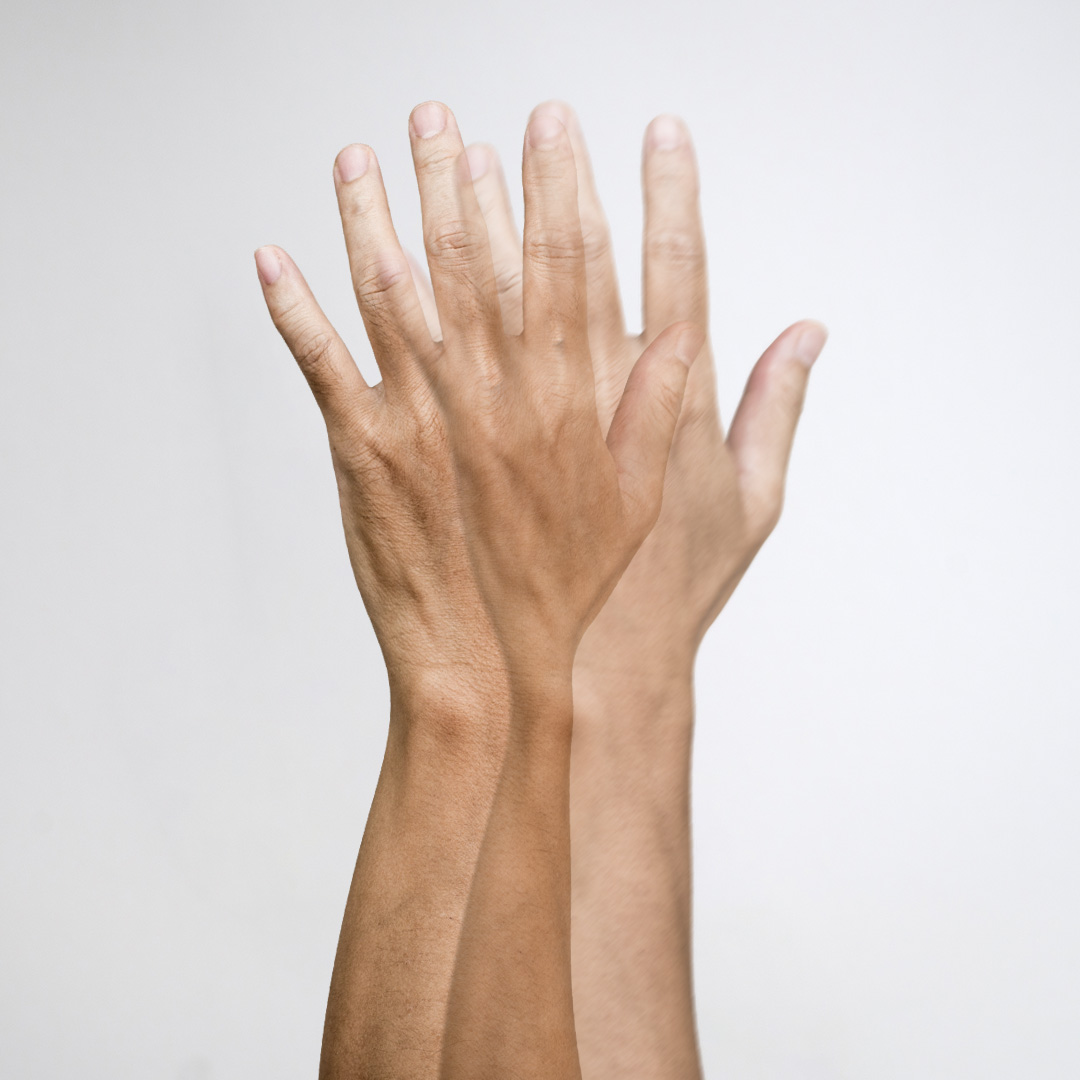Double vision (diplopia): Causes and treatment

Table of contents
Have you ever seen two images when you know there should only be one? Diplopia, commonly known as double vision, causes the brain to perceive a duplicate image of a single object. It can be a temporary annoyance or an indicator of a serious health condition. Knowing what it is and when to seek medical attention can keep you safe and healthy.
The Lentiamo opticians define this condition, explains its variations, and lists possible causes here. Let's take a look!
What is double vision?
Double vision is a condition in which a person sees two images of a single object. These images can appear side by side, on top of each other, or at an angle. It can be a result of temporary factors or various underlying causes, such as problems with the muscles that control eye movement, nerve damage, or issues with the cornea, lens, or retina.
It can cause discomfort, confusion, and difficulty with daily activities such as reading, driving, and walking. It's essential to seek medical attention if you experience seeing duplicated images, as it can be a sign of a serious health issue like stroke or disease.
What does double vision look like?
Double vision causes a single object to appear as two images that sit side-by-side, above or below, or diagonal to each other. The images generally overlap and are rarely completely separated. The secondary image is typically blurred or fainter than the "main" image.
Types of double vision
There are two main types of double vision: monocular and binocular. Monocular diplopia causes side-by-side doubling of an image. Binocular diplopia typically presents in three ways: horizontally, vertically, or obliquely.
Monocular double vision
Monocular diplopia is when two images appear in just one eye. It is caused by a problem within the eye itself, such as a cataract, astigmatism, or dry eye syndrome. Improper glasses prescriptions can also lead to this type.

Monocular double vision
With monocular diplopia, you might notice that the main image appears clearer than the blurrier, secondary image. This is sometimes referred to as a "ghost image."
The symptoms of blurriness are typically confined to one eye.
Binocular double vision
More commonly, people experience binocular diplopia and see two images when both eyes are open. Because it affects both eyes, it typically means that the eyes don't work together properly. This type resolves itself when either eye is closed. It can occur due to a variety of conditions such as strabismus (when eyes do not line up in the same direction) or nerve damage.
Binocular double vision usually manifests visually in three different ways: horizontally, vertically, or obliquely as pictured below.

Horizontal double vision
Horizontal diplopia is when a person sees two images side by side, with one image appearing to the left or right of the other.
Both images may appear blurry with the horizontal binocular type.

Vertical double vision
Vertical diplopia is when a person sees two images stacked on top of each other. One image appears above or below the other.

Oblique double vision
Oblique diplopia is when a second image will appear diagonally, or at an angle, from the other. This type is less common than horizontal and vertical but does occur.
Temporary double vision
Temporary diplopia is when a person experiences seeing double for a short period of time, typically lasting only a few minutes. This can be caused by a variety of factors such as stress, fatigue, or even alcohol consumption.
Double vision that comes and goes may be caused by an ongoing issue. Cornea or lens problems, migraines, side effects of medications, diseases, and misaligned eyes can all result in this type of vision problem that pops up from time to time.
Although generally not a cause for concern, temporary duplicate images can be a symptom of a more serious medical condition or event. The sudden onset of vision problems should never be ignored. Seek immediate medical attention for sudden changes in vision to rule out potentially life-threatening health issues.
What causes double vision?
According to Stanford Health Care, a range of conditions can cause double vision. Corneal or lens problems, muscle or nerve issues that control eye function and movement, or issues in the brain can lead to diplopia. Some causes can be minor, such as astigmatism, or life threatening, such as an aneurysm or stroke.1
The problem may be temporary, treatable, or be caused by a more serious, underlying issue. Environmental factors may induce doubling of images at different times as well. Various parts of the eye and surrounding structures may also be to blame. Additionally, ongoing health issues or diseases may cause temporary or ongoing issues.
Temporary causes
Temporary causes of double images are often related to lifestyle factors or environmental stimuli, such as alcohol or drug use, fatigue, or eye strain. These causes usually resolve on their own once the causing factor is addressed. Low blood pressure or standing up too quickly might briefly affect vision in some people.
Treatable causes
Treatable causes of double images typically involve refractive errors such as nearsightedness, farsightedness, or astigmatism. Dry eye syndrome, eye muscle weakness or misalignment, cataracts, or corneal abnormalities can also cause changes in vision.
If you experience migraines, you might notice visual disturbances including doubled images during a migraine. These causes can often be treated with non-invasive methods such as corrective lenses, eye exercises, or medication.
Underlying causes
Underlying issues related to muscles, nerves, or the brain can affect the functions and movements of the eye, resulting in double images. These causes may be serious and can be related to diabetes, high blood pressure, thyroid disorders, infections, autoimmune disorders, or neurological conditions such as multiple sclerosis, stroke, or a brain tumor.
Some other diseases known to cause duplicated images include Graves' disease, myasthenia gravis, and Guillain-Barre syndrome.2
Symptoms of double vision
- Seeing two images of one object
- Headache
- Droopy eyelids
- Misaligned, "wandering," or crossed eyes
- Nausea or dizziness
- Eye pain
When should you seek medical attention?
Seek immediate medical attention if you experience sudden double vision or if it is accompanied by any confusion, slurred speech, pain, dizziness, or weakness. Seeing double can signal an acute medical issue such as an aneurysm or stroke.
Consult your eye care specialist if you have reoccurring vision troubles that result in duplicate images. Take note of when and how long it persists to help your specialist determine its cause.
Double vision diagnosis
An eye care specialist will typically conduct a thorough eye examination to diagnose the cause of double vision. The exam may include a visual acuity test, eye alignment measurements, a slit-lamp examination to evaluate the front of the eye, and a dilated eye exam to check the back of the eye.
They may also perform additional tests, such as a cover test or a prism test, to assess the degree and cause. They may refer you to another doctor depending on the underlying cause or if they suspect an urgent medical evaluation is needed.
Although diplopia affects vision, an eye care provider may not be the specialist to treat it. If you suspect a prescribed medication, for example, has led to your vision trouble, the best point of contact is likely the health care specialist that prescribed it.
Check if you have double vision
Diplopia may cause you to make visual adjustments in an attempt to align images in your field of vision.
If someone has double vision, they might:
- close or cover one eye.
- tilt or turn their head at different angles.
- continuously squint or narrow their eyes.

Standard vision
For reference, double vision can simply be compared to a standard image.
Someone not experiencing vision problems would see one, clear image like the one pictured here.
How is double vision treated?
Depending on the cause, it can be treated with contact lenses or a glasses prescription. Simple eye exercises or an eye patch can also be used as treatment.
In some cases, eye surgery may be required for correction. Your eye care specialist will determine the best course of action depending on the cause.
Is double vision serious?
Duplicate images are usually not serious and can be treated. However, it can also indicate a more immediate concern. It's important to consult an eye care professional if you experience duplicated images, even intermittently.
Double vision prevention
The ability to prevent doubling of images depends on the cause. In many cases, it can be effectively prevented with non-invasive methods such as eye exercises or corrective eyewear. With proper care and management, it can often be successfully addressed.
Taking regular eye exams is an important preventative measure to ensure your eyes stay healthy as well.
Closing thoughts from Lentiamo
This type of change in vision can be alarming. Keep in mind that it's not always a serious matter. Only a specialist's evaluation can accurately determine the cause, however.
Remember to contact a medical professional immediately in case of abrupt double vision or any other sudden changes in your vision. We hope this information is useful in helping you understand different types of diplopia and their causes.
Read more
Explore other topics related to diplopia.
Sources
1. Stanford Health Care, Causes of Double Vision
2. Review of Optometry, Top Causes of Double Vision







